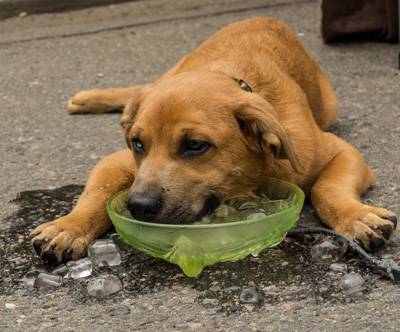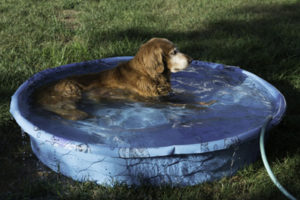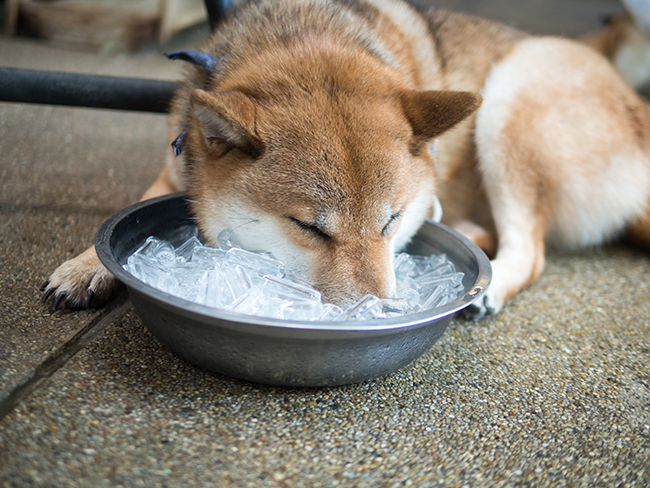
©Scottiebumich/Adobe Stock
How to prevent your pets from overheating during the hot “dog days” of summer.
Do your pets seem to have an uncanny ability to find the warmest spot in the house? And do you wonder, as they bask in the sun during the hottest part of July, if they are getting too hot? Your vet’s staff can give you valuable advice based on the heat and humidity in your area, but the following information should also be helpful.
Some of the signs a cat might show if he becomes overheated include “… open-mouth breathing and panting, vocalizing, salivating, vomiting or diarrhea, or red gums,” said Jane Brunt, a veterinarian at the Cat Hospital at Towson in Baltimore, Maryland. Other neurological signs include trembling, seizures and ataxia, which Dr. Brunt described as “wobbly when walking.”

©dimakp/Adobe Stock
Signs of heat exhaustion you can easily see in dogs include panting or hyperventilation, dehydration, reddened gums, production of little or no urine, and excessive drooling (known as ptyalism). Other indicators include erratic or rapid pulse, diarrhea, vomiting and increased body temperature (above 103 degrees Fahrenheit).
For dogs, normal body temperature is between 101 and 102.5; cats’ is somewhere around 101 degrees Fahrenheit, Dr. Brunt explained, adding “Once over 102.5 [degrees], our patients are considered to have hyperthermia. Once a body temperature reaches 105, then heat stroke [is a] concern.”

©Art/Adobe Stock
For that reason, you should contact your vet immediately if a pet shows signs of overheating. “Tell them what you see and that you’re on your way,” Dr. Brunt said. “Immediate care is important to reverse the life-threatening and/or long-term effects of heatstroke.”
As you prepare to take your pet to the vet, there are a few steps you can take immediately to treat overheating, including moving him to a cooler area and reducing his temperature by wetting his ear flaps and paw pads with cool water. Giving overheated pets cool water to drink also can help, but you should never compel them to drink or force water into their mouths.
To help prevent your pets from getting too hot and avoid heat exhaustion and heatstroke altogether, follow these tips:
-

Placing a towel-wrapped frozen water bottle in your cat’s bed or cubbyhole can make nap and grooming time much cooler.
©joncee872015/Adobe StockMake sure your pet has plenty of fresh water (this is a priority year-round, not just when it’s hot outside). Consider adding an ice cube or two to the bowl to keep the water nice and cool. Many cats and dogs like to lick the ice cubes, too.
- To provide a cool place to nap, fill a water bottle and freeze it. Wrap the frozen bottle in a towel, and tuck it into your pet’s bed, in his dog house or on the cat tree. Your pet will be able to control his own internal body temperature as needed with such a cooling spot available.
- Run box or oscillating fans to keep the air moving throughout your home.
- Place a dog pool in a shady part of the yard or patio and replenish it frequently with cool water.
- Consider keeping your pet in the relative cooler temperatures of your home during the hottest parts of the day. If he succumbs to overheating while outside unattended, you might not be able to help him promptly.
If your pet has an all-white coat or a coat with white patches, he may face another sun-related issue. Animals with white fur can become sunburned, and prolonged sunburns can lead to a type of skin cancer. Consider asking your vet to recommend a gentle sunscreen safe for use on your pet, and apply it to hid ears and nose—and other recommended areas—to help prevent sunburn.





